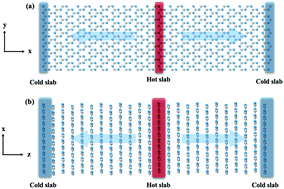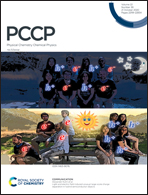Thermal transport properties of graphite carbon nitride
Abstract
Graphite carbon nitride (GCN), which can be regarded as a nitrogen heteroatom-substituted graphite framework, has attracted great attention as a new 2D layered structure material with semiconductor electronic characteristics. Using molecular dynamics simulations, the in-plane thermal conductivity and cross-plane thermal resistance of two GCN structures (i.e., triazine-based and heptazine-based) are investigated. Our results show that the in-plane thermal conductivities of the triazine-based and heptazine-based GCN monolayers along the armchair direction are 55.39 and 17.81 W m−1 K−1, respectively. The cross-plane thermal resistance decreases with increasing layer number and reaches asymptotic values of 3.6 × 10−10 and 9.3 × 10−10 m2 K W−1 at 40 layers for triazine-based and heptazine-based GCN, respectively. The in-plane thermal conductivity can be effectively manipulated by changing the temperature and applying strain, while it is insensitive to the number of layers, which is in sharp contrast to that of graphene. Moreover, the cross-plane thermal resistance decreases monotonically with temperature and coupling strength, and can be modulated by external strain. Surprisingly, the cross-plane tensile strain can reduce the thermal resistance of the heptazine-based GCN. Our study serves as a guide to groups interested in the physical properties of GCN.



 Please wait while we load your content...
Please wait while we load your content...